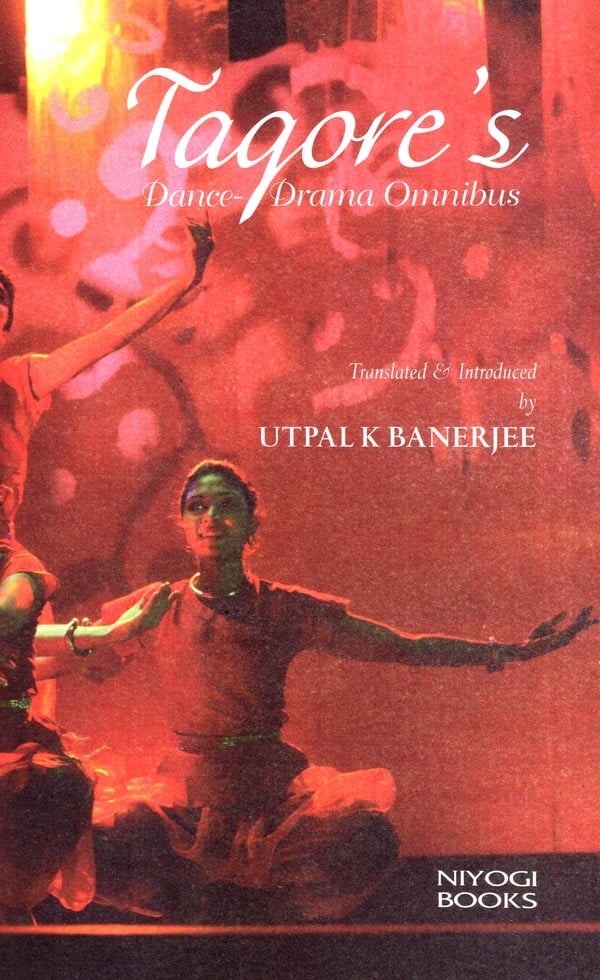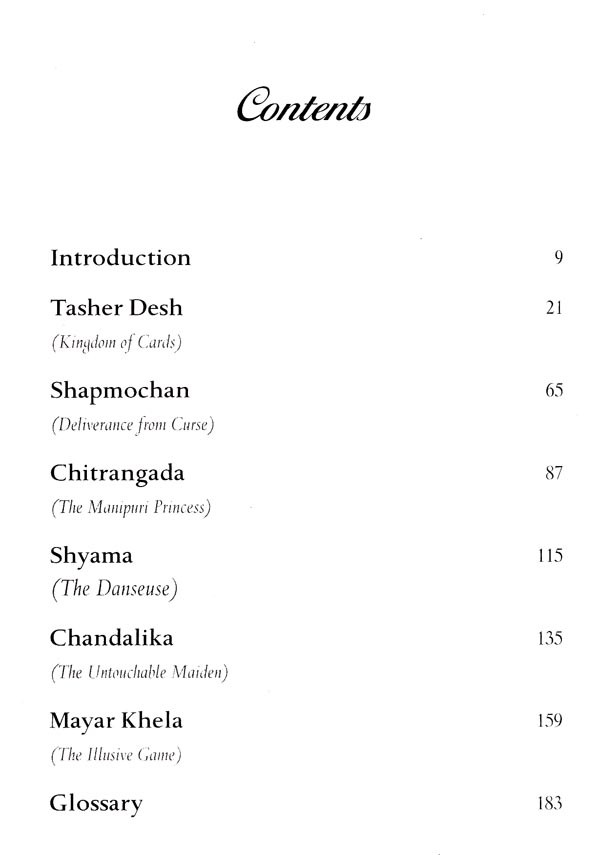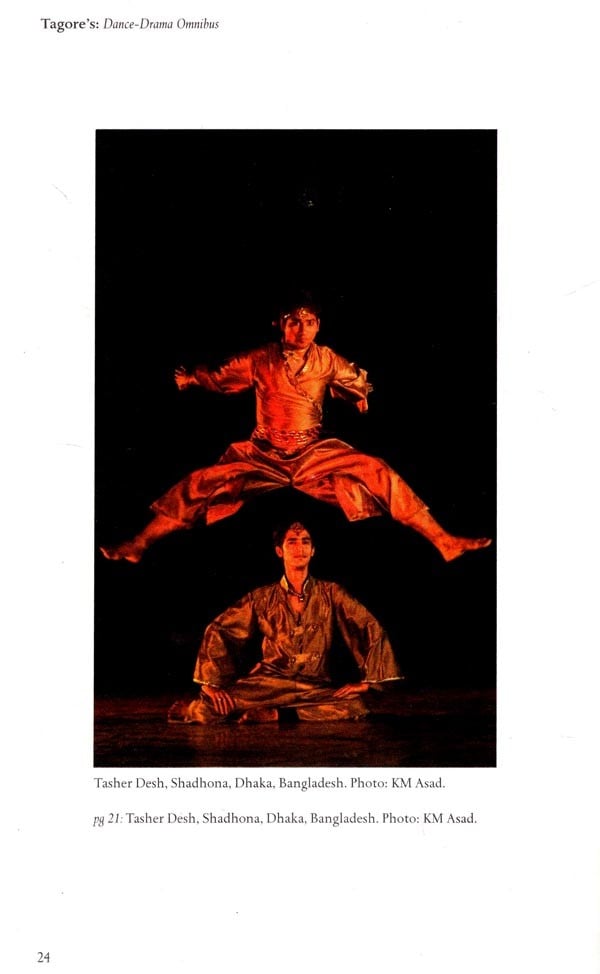About the Book The six dance-dramas translated in this book cover a culmination of Rabindranath Tagore's dance-interest in the latter's most effulgent manifestation. It was only in the last half decade of Tagore's life that his dance-consciousness reached its zenith and he could offer the best of his life-time passion for dance in the form of six dance-dramas, namely, two music-dramas: Taser Desh (interspersed with prose dialogue), Shapmochan (with narrator), and four full-bodied dance-dramas: Chitrangada, Shyama, Chandalika and Mayar Khela (re-visited). All the dance-dramas are predominantly 'recitative' music dramas. The clear story-line is piggybacked mainly on the 'recitative' pattern of the melodiously articulated dialogues and narratives, interlaced with songs.
The translation follows closely the letter and spirit of the original (including the lyrics), in trying to do justice not only to the rhythm and metre of the original, but also the internal rhymes, so that the exquisite poetry and lyrical beauty of Tagore can be savored even in the translation.
About the Author Dr Utpal K Bannered has been an adviser on Management and Information Technology for thirty-five years, after having studied on a doctoral programmed in the UK as a Commonwealth Scholar from 1968-1972. He has an abiding interest in Indian art and culture. His formal exposure to the visual and performing arts of the world was through courses conducted at the Extra Mural Department, University of Manchester, UK. He has been National Project Director for the India Gandhi National Centre for the Arts (IGNCA) relating to the UNDP project on Multimedia Database for Art and Culture Documentation and Computerization from 1991-1993.
In the nineties, Dr Bannered gave lectures on Indian art and culture, organised by the Indian Council for Cultural Relations (ICCR), in Canada and South America. He was also invited by the Kala Bharati Foundation of Canada to speak on the same subject.
He has been writing on the arts and culture in several newspapers. and journals and is a regular contributor on cultural and professional programmes to London BBC, All India Radio and Indian television. He has also written 33 books, including Hindu Joy of Life (Niyogi Books, Delhi, 2006), which has gone into a second edition.
Dr Banerjee was awarded the Padma Shri in recognition of distinguished service in literature and education' in 2009.
His recent Tagore studies include Tagore's Mystique of Dance, Tagore-nama, Mystic Songs of Tagore and four volumes of Rainbow Rhymes of Tagore under: Humour & satire, Mother & Child, Wish Fulfillment Foray and Fantasy Poetry.
Introduction The six dance-dramas translated in this book camouflage a crowning touch of Rabindranath Tagore's dance-interest in its most effulgent manifestation. It was only in the last half decade of Tagore's life that his dance-consciousness reached its zenith and he could offer the best of his life-time passion for dance in the form of six dance-dramas, namely, two music-dramas: Tasher Desh (interspersed with prose dialogue). Shapmochan (with narration), and four full bodied dance-dramas: Chitrangada, Shyama, Chandalika and Mayar Khela (re-visited). The thematic features of these six dance-dramas have been summarized below. All the dance-dramas were, in a sense, akin to the earlier Valmiki Pratibha and Kalmrigaya, predominantly 'recitative music dramas. The clear story-line was piggybacked mainly on the 'recitative' pattern of the melodiously articulated dialogues and narratives, interlaced with songs.
Even though Tagore's dance-dramas were meant to be enacted in the form of dance, the main rasa of each play was to be kept uppermost in mind. The dancers were vehicles of conveying that spirit to the viewers, dwarfing their individual skills and dexterity all the while. The male and female dancers often came from the background of different styles and techniques. But the aim defined for them by Tagore was to convey correctly the nuances of the song they were meant to dance with.
**Contents and Sample Pages**






















